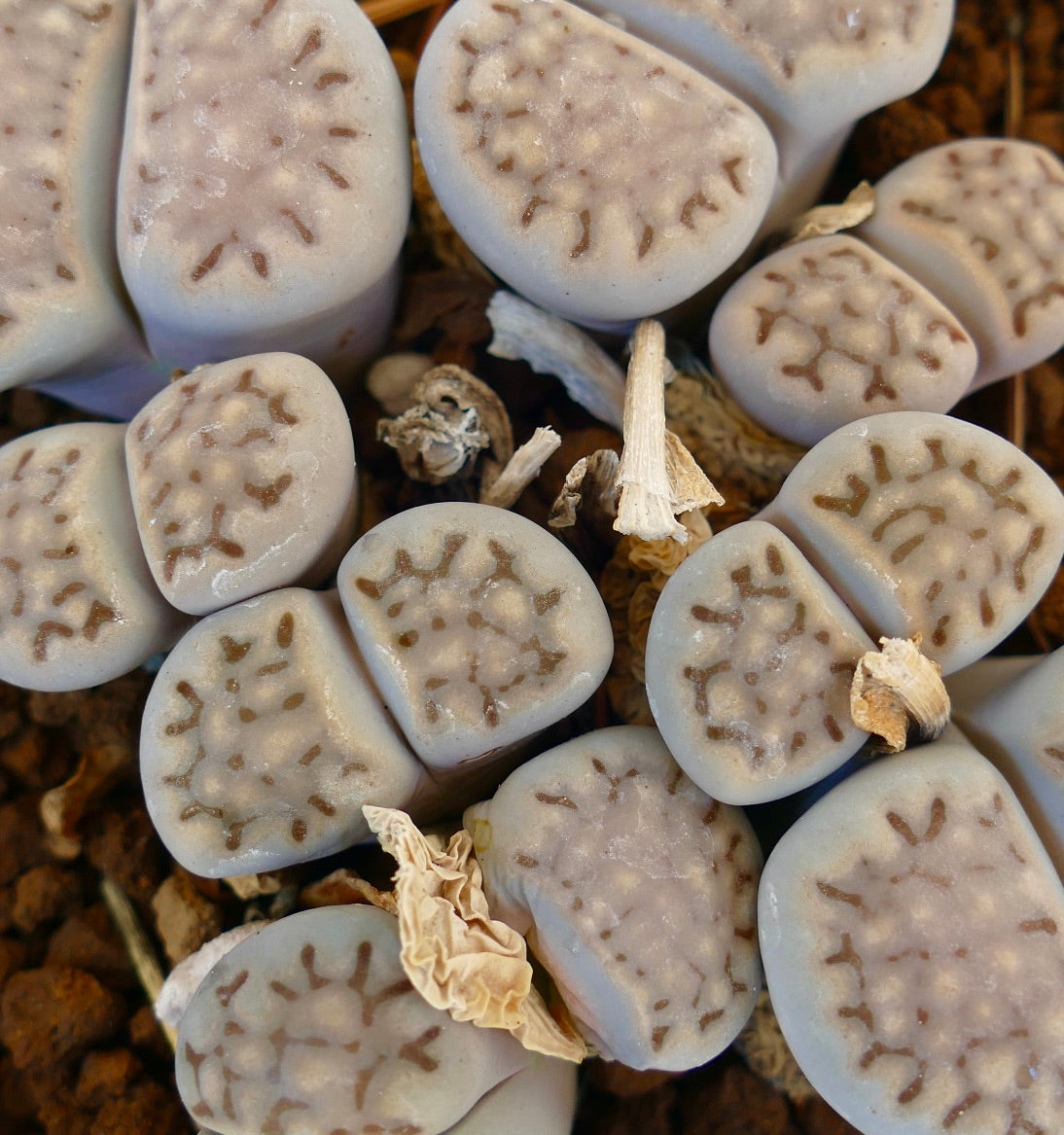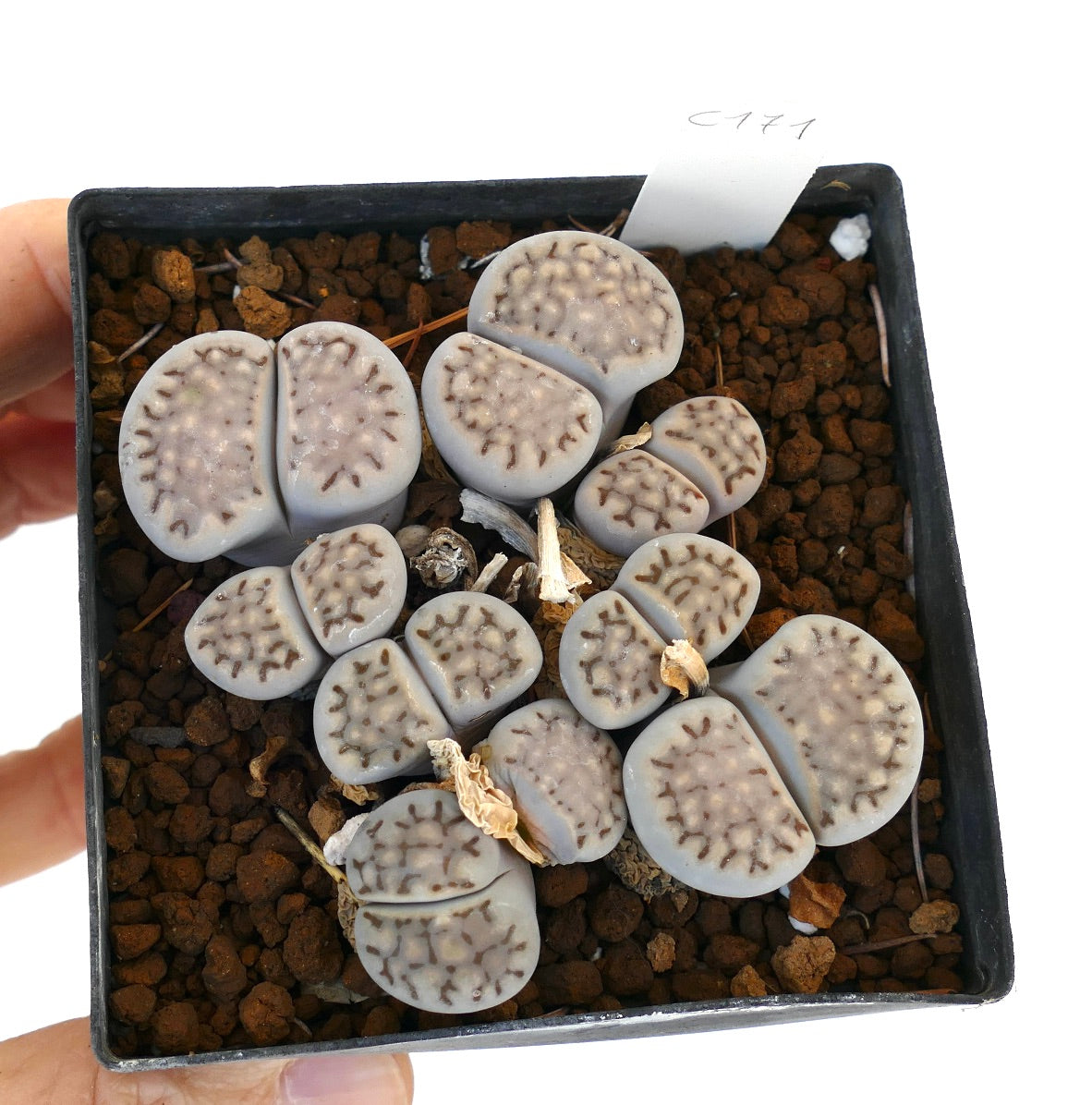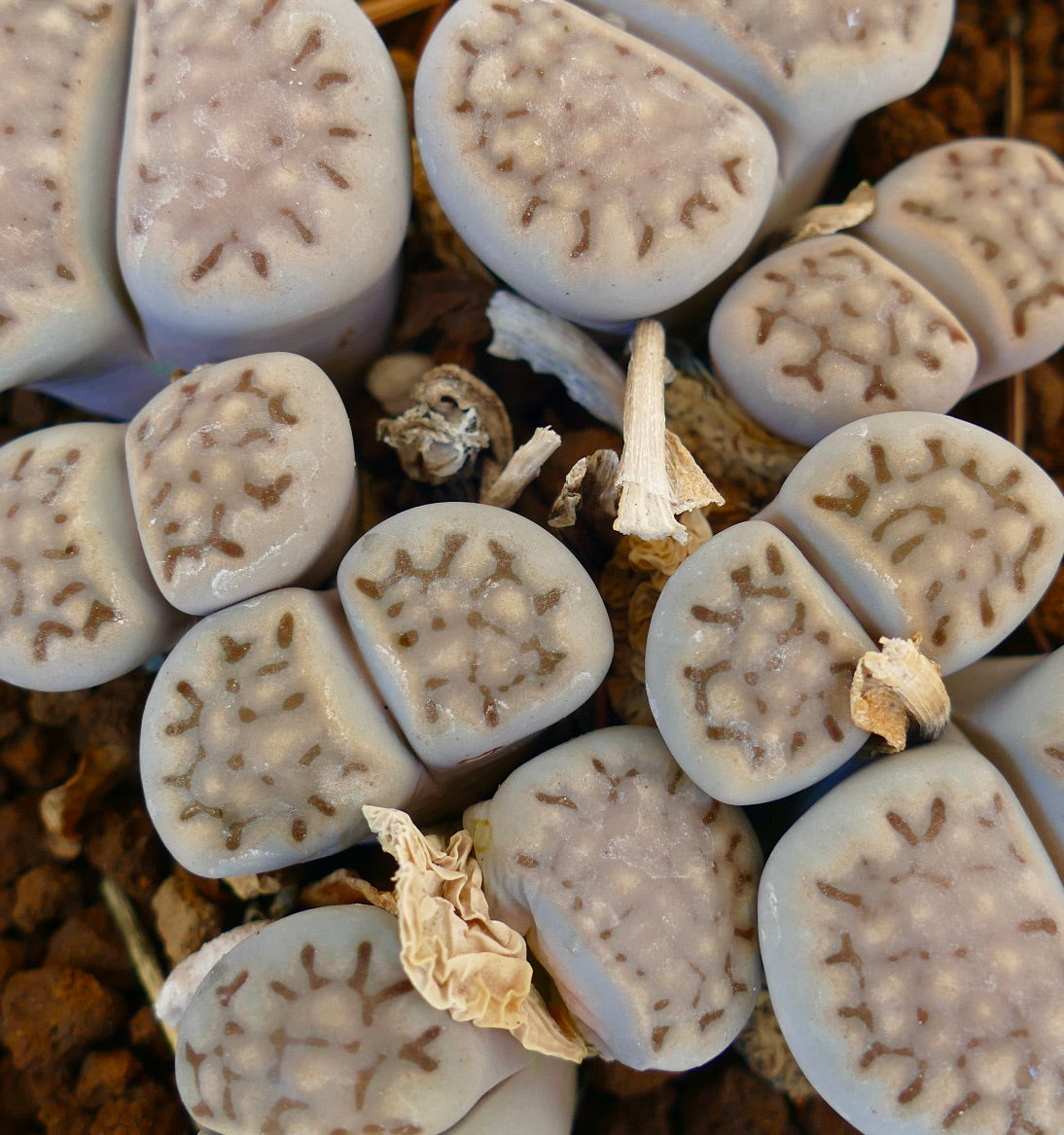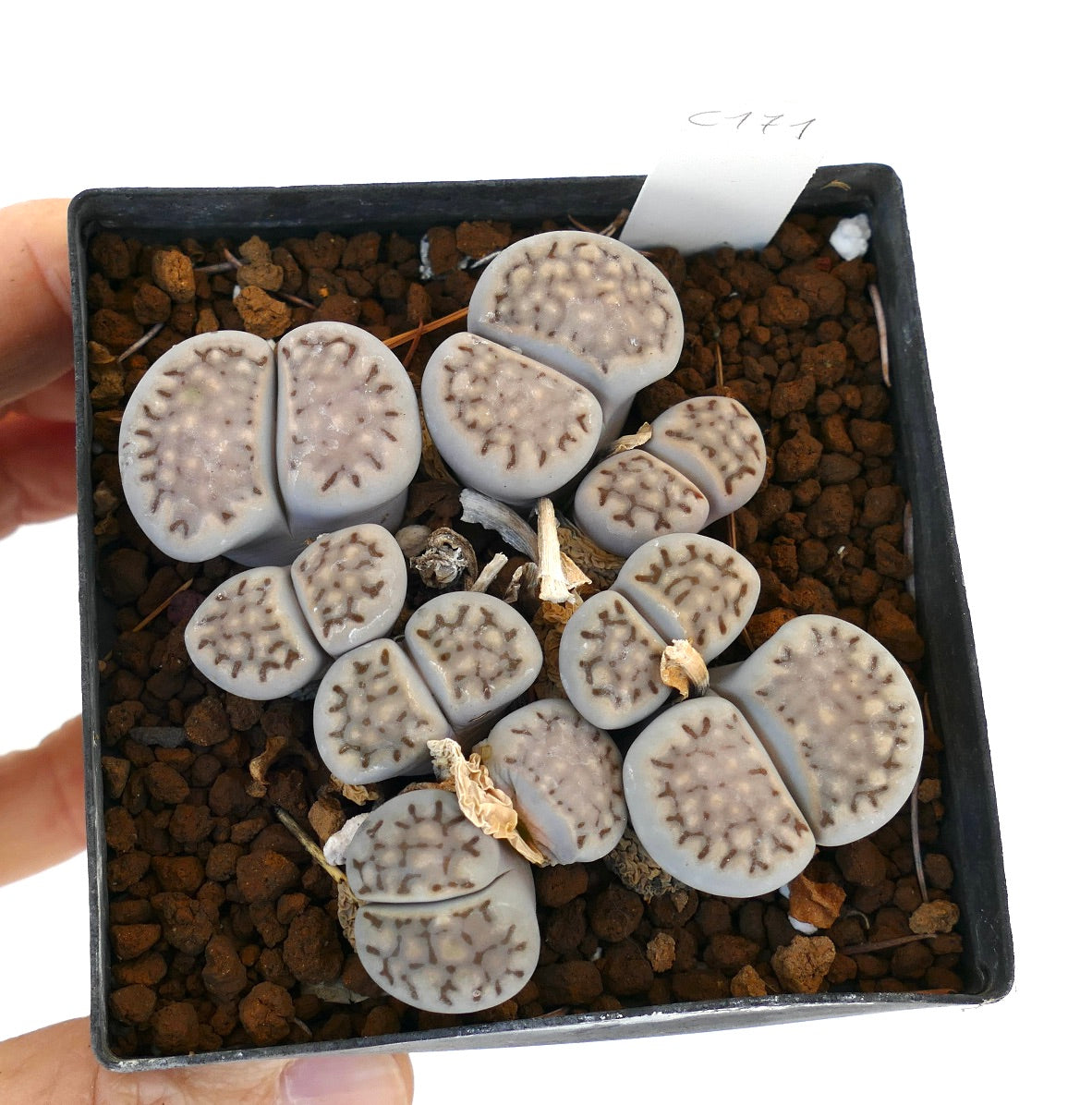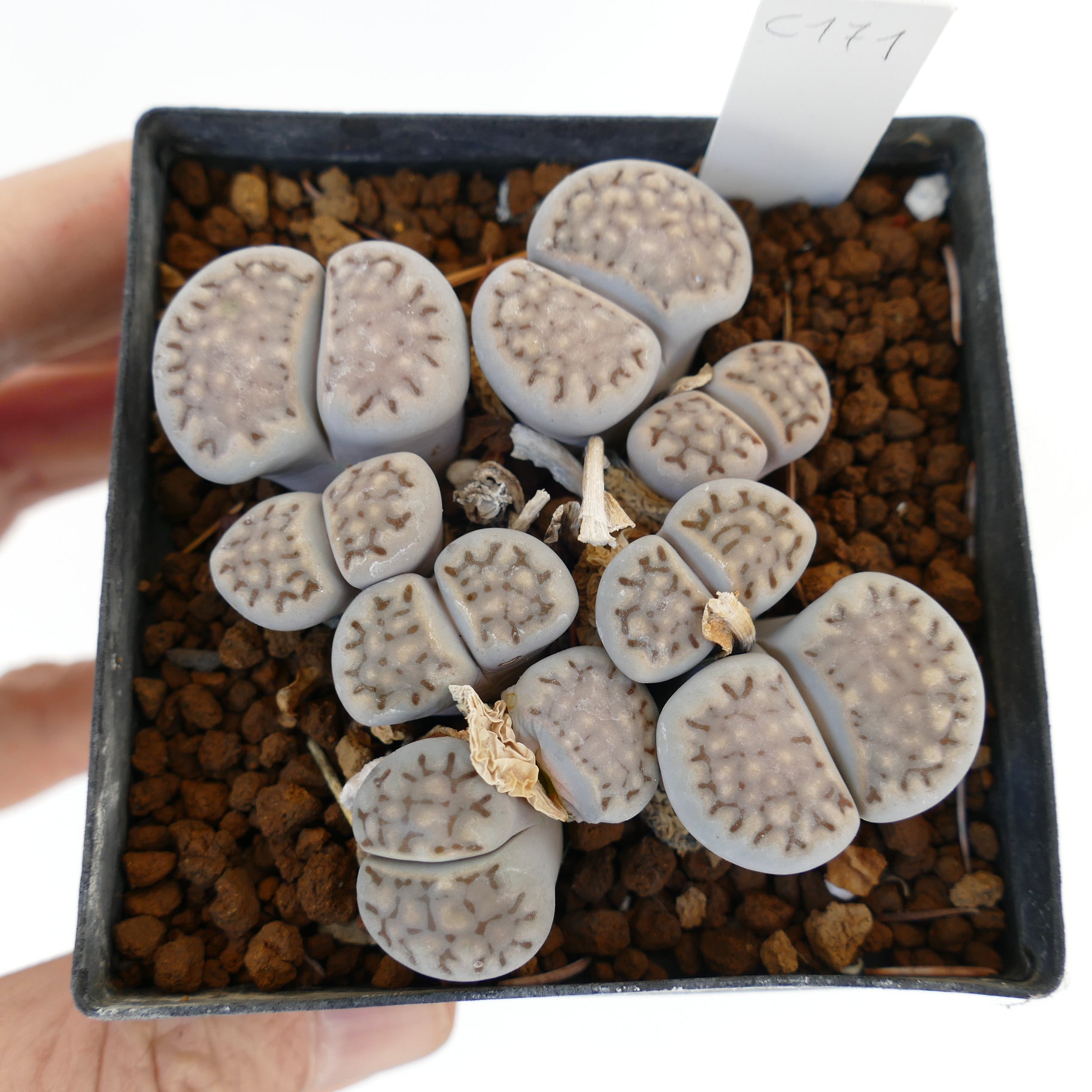- Sigle Speciem
Lithops julii ssp. fulleri v. fulleri C171 (60 km W of Upington, South Africa)
Lithops julii ssp. fulleri v. fulleri C171 (60 km W of Upington, South Africa)
Couldn't load pickup availability
Product Description
Lithops julii ssp. fulleri v. fulleri C171 is a specific variation of Lithops julii, a species of succulent plant native to Southern Africa. Here's a description of this variation:
-
Appearance: Like all Lithops species, Lithops julii ssp. fulleri v. fulleri C 171 has a distinctive appearance resembling small stones or pebbles. Each individual plant consists of a pair of fleshy, leaf-like structures that are fused together at their bases, forming a cleft between them. This cleft houses the plant's flower, which emerges during the blooming season.
-
Coloration: The coloration of Lithops julii ssp. fulleri v. fulleri C 171 can vary, but it typically features shades of green, grey, brown, and sometimes reddish tones. The colors often mimic the surrounding soil or rocks, providing camouflage against predators and harsh environmental conditions.
-
Size: Generally, Lithops julii ssp. fulleri v. fulleri C 171 remains small in size, with individual plants typically reaching around 2-3 centimeters in diameter.
-
Habitat: This variation of Lithops julii is found in the Northern Cape province of South Africa, approximately 60 kilometers west of Upington. Its natural habitat likely consists of arid, rocky regions with well-draining soil.
THE SALE IS FOR ALL PLANTS IN THE POT
Botanical family: Aizoaceae
Botanical genus: Lithops
Botanical species: julii ssp. fulleri v. fulleri C171
Cultivation
Cultivation
Info and Disclaimers
Info and Disclaimers
Plant Height:
Plant Diameter:
Pot Size:
Grafted/Not Grafted:
Picture take on:
